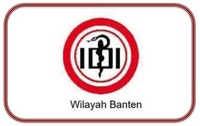Potential Protective Role of 14-3-3 Protein in Pathological Cardiac Hypertrophy Through The Regulation of Endoplasmic Reticulum Stress: Role of Calreticulin
DOI:
https://doi.org/10.15408/avicenna.v2i2.25441Keywords:
14-3-3, cardiac hypertrophy, endoplasmic reticulum stress, GRP78, calreticulinAbstract
Introduction: 14-3-3 protein plays an important role in protecting cardiac cells from hypertrophy and endoplasmic reticulum stress during pressure overload elicited by aortic banding (AB) surgery; however, the relation among these protective roles is largely unknown.
Methods: We investigated the in vivo role of 14-3-3 protein in two protocols involving C57/BL-6 mice and dominant negative (DN) 14-3-3η mice subjected to three- or seven-days pressure overload stimulation by applying AB surgery. The protein expressions of cardiac hypertrophy and ER stress markers, including atrial natriuretic peptide (ANP), galectin-3, glucose-regulated protein (GRP)78, calreticulin as well as 14-3-3 protein was analyzed by western blot.
Results: Three- or seven-day pressure overload stimulation significantly increased the heart weight/body weight (HW/BW) ratio; cardiomyocyte diameter; and the protein expression levels of ANP, GRP78 as well as 14-3-3 in the C57/BL-6 mice. Partial inactivation of 14-3-3 protein in the DN 14-3-3η mice significantly increased the protein expression of ANP, Galectin-3, GRP78, and calreticulin after three- or seven-days AB surgery.
Conclusion: These results suggest that 14-3-3 protein, as a molecular chaperone, protects against pathological cardiac hypertrophy, at least in part, by maintaining the normal ER function through the regulation of GRP78 and calreticulin.References
Olson EN, Molkentin JD. Prevention of cardiac hypertrophy by calcineurin inhibition: hope or hype?. Circ Res. 1999 Apr 2;84(6):623-32.
Krauser DG, Devereux RB. Ventricular hypertrophy and hypertension: prognostic elements and implications for management. Herz. 2006 Jun;31(4):305-16.
Frey N, McKinsey TA, Olson EN. Decoding calcium signals involved in cardiac growth and function. Nat Med. 2000 Nov;6(11):1221-7.
Okada K, Minamino T, Tsukamoto Y, Liao Y, Tsukamoto O, Takashima S, et al. Prolonged endoplasmic reticulum stress in hypertrophic and failing heart after aortic constriction: possible contribution of endoplasmic reticulum stress to cardiac myocyte apoptosis. Circulation. 2004 Aug 10;110(6):705-12.
Zhang ZY, Liu XH, Hu WC, Rong F, Wu XD. The calcineurin-myocyte enhancer factor 2c pathway mediates cardiac hypertrophy induced by endoplasmic reticulum stress in neonatal rat cardiomyocytes. Am J Physiol Heart Circ Physiol. 2010 May;298(5):H1499-509.
Aitken A, Jones D, Soneji Y, Howell S. 14-3-3 proteins: biological function and domain structure. Biochem Soc Trans. 1995 Aug;23(3):605-11.
Muslin AJ, Tanner JW, Allen PM, Shaw AS. Interaction of 14-3-3 with signaling proteins is mediated by the recognition of phosphoserine. Cell. 1996 Mar 22;84(6):889-97.
Liao W, Wang S, Han C, Zhang Y. 14-3-3 proteins regulate glycogen synthase 3beta phosphorylation and inhibit cardiomyocyte hypertrophy. FEBS J. 2005 Apr;272(8):1845-54.
Gurusamy N, Watanabe K, Ma M, Prakash P, Hirabayashi K, Zhang S, et al. Glycogen synthase kinase 3beta together with 14-3-3 protein regulates diabetic cardiomyopathy: effect of losartan and tempol. FEBS Lett. 2006 Apr 3;580(8):1932-40.
Watanabe K, Ma M, Hirabayashi K, Gurusamy N, Veeraveedu PT, Prakash P, et al. Swimming stress in DN 14-3-3 mice triggers maladaptive cardiac remodeling: role of p38 MAPK. Am J Physiol Heart Circ Physiol. 2007 Mar;292(3):H1269-77.
Sari FR, Watanabe K, Widyantoro B, Thandavarayan RA, Harima M, Zhang S, et al. Partial inactivation of cardiac 14-3-3 protein in vivo elicits endoplasmic reticulum stress (ERS) and activates ERS-initiated apoptosis in ERS-induced mice. Cell Physiol Biochem. 2010;26(2):167-78.
Xing H, Zhang S, Weinheimer C, Kovacs A, Muslin AJ. 14-3-3 proteins block apoptosis and differentially regulate MAPK cascades. EMBO J. 2000 Feb 1;19(3):349-58.
Tarnavski O, McMullen JR, Schinke M, Nie Q, Kong S, Izumo S. Mouse cardiac surgery: comprehensive techniques for the generation of mouse models of human diseases and their application for genomic studies. Physiol Genomics. 2004 Feb 13;16(3):349-60.
Boden G, Duan X, Homko C, Molina EJ, Song W, Perez O, et al. Increase in endoplasmic reticulum stress-related proteins and genes in adipose tissue of obese, insulin-resistant individuals. Diabetes. 2008 Sep;57(9):2438-44.
Houry WA. Mechanism of substrate recognition by the chaperonin GroEL. Biochem Cell Biol. 2001;79(5):569-77.
O'Kelly I, Butler MH, Zilberberg N, Goldstein SA. Forward transport. 14-3-3 binding overcomes retention in endoplasmic reticulum by dibasic signals. Cell. 2002 Nov 15;111(4):577-88.
Shikano S, Coblitz B, Wu M, Li M. 14-3-3 proteins: regulation of endoplasmic reticulum localization and surface expression of membrane proteins. Trends Cell Biol. 2006 Jul;16(7):370-5.
Yano M, Nakamuta S, Wu X, Okumura Y, Kido H. A novel function of 14-3-3 protein: 14-3-3zeta is a heat-shock-related molecular chaperone that dissolves thermal-aggregated proteins. Mol Biol Cell. 2006 Nov;17(11):4769-79.
Murphy N, Bonner HP, Ward MW, Murphy BM, Prehn JH, Henshall DC. Depletion of 14-3-3 zeta elicits endoplasmic reticulum stress and cell death, and increases vulnerability to kainate-induced injury in mouse hippocampal cultures. J Neurochem. 2008 Jul;106(2):978-88.
Gomes-Alves P, Couto F, Pesquita C, Coelho AV, Penque D. Rescue of F508del-CFTR by RXR motif inactivation triggers proteome modulation associated with the unfolded protein response. Biochim Biophys Acta. 2010 Apr;1804(4):856-65.
Lynch J, Guo L, Gelebart P, Chilibeck K, Xu J, Molkentin JD, et al. Calreticulin signals upstream of calcineurin and MEF2C in a critical Ca(2+)-dependent signaling cascade. J Cell Biol. 2005 Jul 4;170(1):37-47.
Lynch J, Michalak M. Calreticulin is an upstream regulator of calcineurin. Biochem Biophys Res Commun. 2003 Nov 28;311(4):1173-9.







